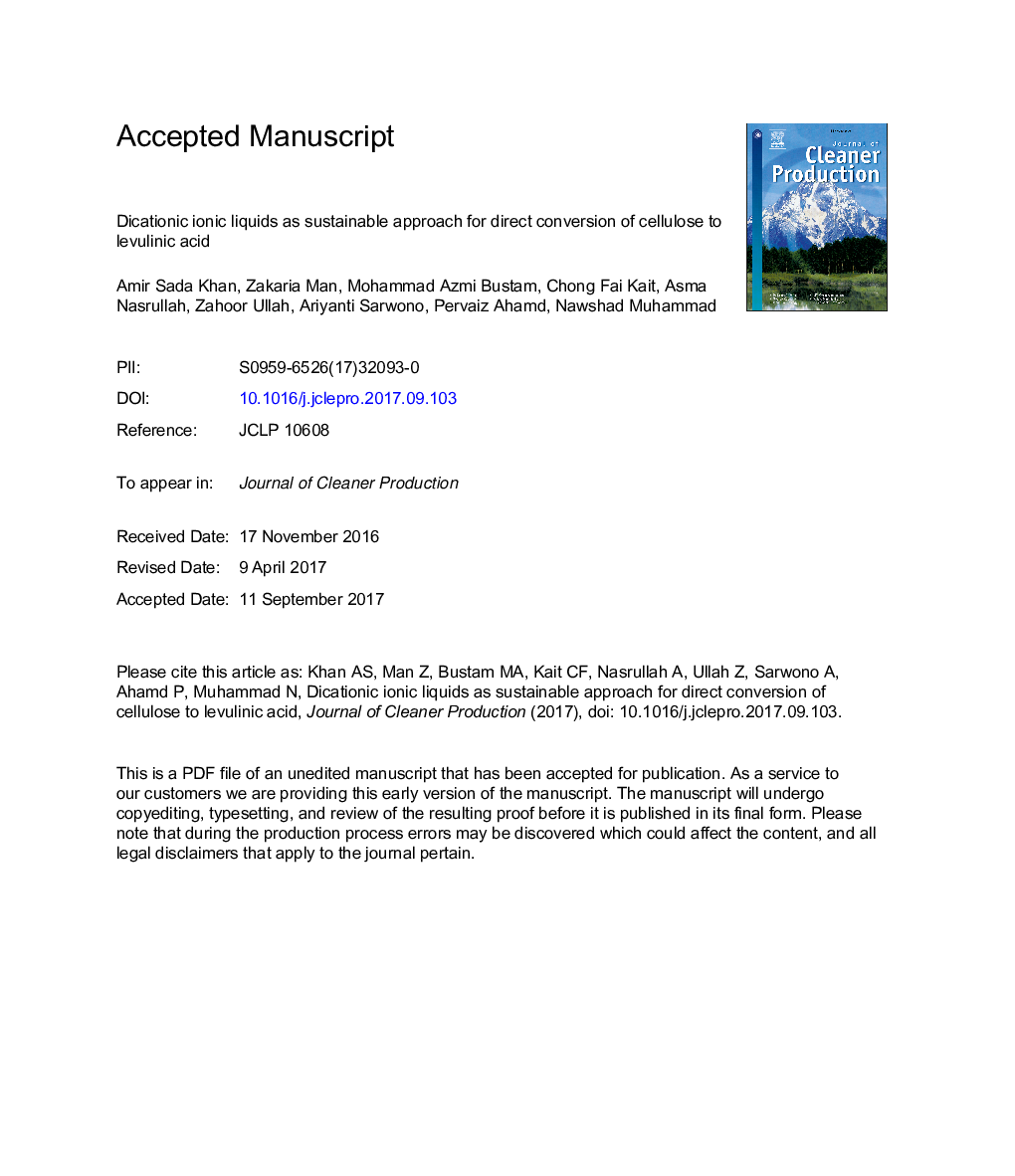| Article ID | Journal | Published Year | Pages | File Type |
|---|---|---|---|---|
| 5479244 | Journal of Cleaner Production | 2018 | 26 Pages |
Abstract
The conversion of cellulose to platform chemicals and renewable energies is the most promising and sustainable route to solve the crisis of fossil fuel resources. With this aim, the one-pot conversion of cellulose to industrial important levulinic acid (LA) using dicationic ionic liquids as a catalyst has been investigated. In the present research work, dicationic ionic liquids, containing 1,1-bis(3-methylimidazolium-1-yl) butylene ([C4(Mim)2]) cation with counter anions hydrogensulfate, dihydrogensulfate, methanesulfonate, and trifluoromethanesulfonate has been synthesized and applied for one-pot conversion of cellulose to LA. The structures, thermal stability, and acidity of ILs were determined by 1H NMR, CHNS values, thermogravimetric analyzer (TGA) and Hammet acidity function, respectively. Among the synthesized ionic liquids, [C4(Mim)2][(2HSO4)(H2SO4)2] showed higher catalytic activity for conversion of cellulose to LA (55%) without using any additional catalyst or solvent at 100 °C for 3 h, which is the best result compared to previous reports. A mechanism to explain the reaction route toward LA formation is proposed. Moreover, the recycling of IL was easily achieved without structural changes or any impurities. This one-pot production of levulinic acid from untreated cellulose will open new opportunity for the conversion of sustainable biomass resources into valuable chemicals.
Related Topics
Physical Sciences and Engineering
Energy
Renewable Energy, Sustainability and the Environment
Authors
Amir Sada Khan, Zakaria Man, Mohamad Azmi Bustam, Chong Fai Kait, Asma Nasrullah, Zahoor Ullah, Ariyanti Sarwono, Pervaiz Ahamd, Nawshad Muhammad,
